KNOW-HOW
GISpedia
Here you will find answers to frequently asked questions and tips & tricks about our products.
General terms
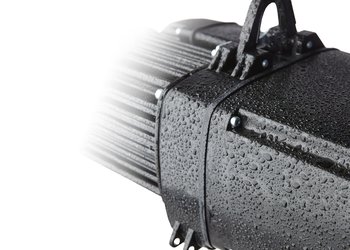
What does IP protection class mean?
The degree of protection designation is always shown by the letter pair IP appended by two digits. These indicate the degree of protection of a casing with regard to contact and foreign bodies (first digit) and moisture or water (second digit). You will find more details here: https://en.wikipedia.org/wiki/IP_Code
Electric chain hoists
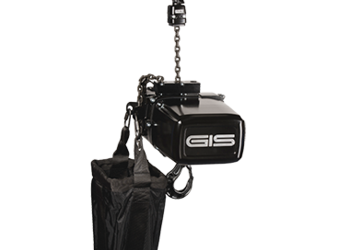
What is the difference between electric chain hoists and motors?
There is no difference. In entertainment event and stage industry, people often talk about motors, while in the manufacturing industry the term electric chain hoist is more common.
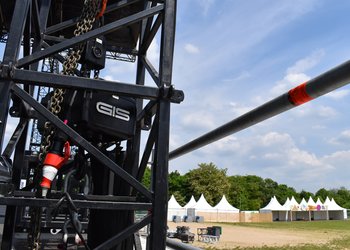
Are electric chain hoists from GIS suitable for outdoors use?
The LP / LPM series feature as standard protection class IP 65 (dust-tight and protected against water jets), which allows outdoor use without any problems.
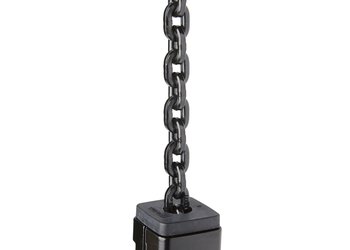
What are the advantages of profile-steel chains?
In comparison with traditional round-steel chains, profile-steel chains as used with the electric chain hoist LPM and LP have a significantly higher safety factor which reduces the wear out and extends the service life.

What capacities are single-phase electric chain hoists suitable for?
GIS single-phase electric chain hoists can be used for a lifting capacity of 2000 kg. For maximum capacities the hoisting speed is reduced to 2 m/min. Power driven trolleys in 1 phase design are available for the electric chain hoists.
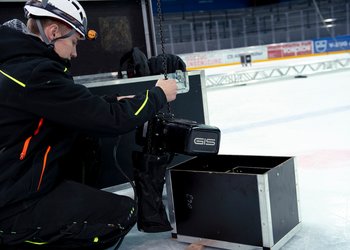
What is the temperature range for the use of electric chain hoists?
GIS electric chain hoists in the standard version are suitable for the temperature range - 15° to + 50°. For ambient temperatures below the minimum and above the maximum special versions are used.
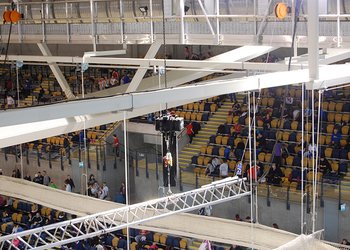
What is a D8 motor?
A D8 motor is a common, industrial chain hoist, which is used for stage technology according to the German IGVW (Interessengemeinschaft Veranstaltungswirtschaft) under the quality standard SQP2:2018.
When holding loads above people, a secondary safety device (sling chain or wire rope for twice the nominal load) is required to fix the load.
GIS motors in D8 version can be used as climbing or stationary hoist without conversion up to 3200 kg S.W.L. in 1 fall or 6300 kg S.W.L. in 2 falls operation.
The LPML & LPL chain motor series was specially developed for rigging applications in the D8 range and offers motors for lifting capacities of 500, 1000 and 2000 kg. In use at open-air events and concert tours, they impress with their very low dead weight.
It is important to note that a second brake can be fitted to the GIS motors, but this does not automatically turn the D8 motor into a D8 Plus motor.
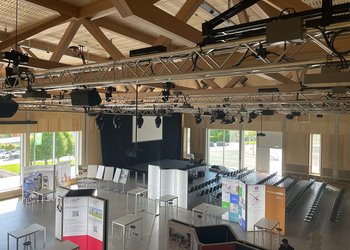
What is a D8 Plus motor?
The GIS motor in D8 Plus version is an electric chain hoist specially designed for holding loads above people (for example a video cube above an ice rink or a truss with speakers, LED wall and spotlights above a concert stage). In contrast to the D8 motor, no secondary safety device is required to secure the load. The required safety criteria for the D8 Plus chain hoist according to the German IGVW (Interessengemeinschaft Veranstaltungswirtschaft) under the quality standard SQP2:2018 are a static chain safety factor of at least 8:1, double nominal load capacity of all components in the flow of forces and the addition of a 2nd brake.
GIS motors in D8 Plus version can be used as climbing or stationary hoists without modification up to 2500 kg S.W.L. in 1 fall or 3200 kg in 2 falls operation.
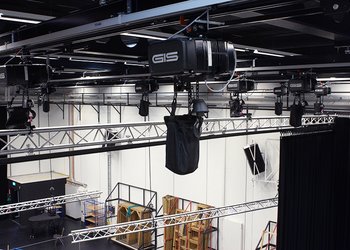
What is a C1 motor?
A C1 motor according to the German IGVW (Interessengemeinschaft Veranstaltungswirtschaft) under the quality standard SQP2:2018 is used for holding and moving loads above people, as often occurs in scenic performances, for example in theatre performances or stage shows. Here, particularly high safety requirements apply to the motors:
- Dynamic chain safety factor of at least 8:1
- Double nominal load capacity of all components in the power flow
- Addition of a 2nd brake
- Geared limit switch with additional emergency stop contacts
- Load sensor for overload protection
Often a path measurement by means of an encoder is also required to determine and track the position of the load hook.
GIS motors in C1 version can be used as climbing or stationary hoists without conversion up to 2000 kg S.W.L. in single fall operation.

Is holding loads above people allowed as an industrial application?
With reference to the industrial standard EN14492-2, Annex E, such an application is permitted. Annex E describes the additional requirements in detail. These are identical to the D8 Plus version of the SQP2, but a limit switch is mandatory.

What does group movement mean?
In a group movement, a load (e.g. truss, LED cube) is lifted and held by several motors. The lifting and lowering movements are "synchronous". The motors are controlled from a controller (e.g. briefcase controller, rack or wall controller). It can be used to start the lifting or lowering movement, but also to determine which chain hoists are active for group travel and which are not. The emergency stop button acts on all connected motors.
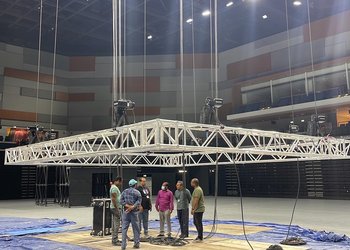
Do all motors in a group run at the same speed?
Unfortunately, this is not 100% the case, even if the specified lifting speed is the same for all motors in the group. There are various reasons for this, such as slip, minor deviation in the winding of the stator or different weight distribution of the load.
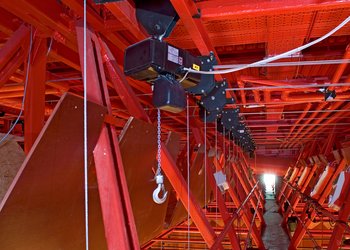
What is a stationary application of the chain hoist?
In a stationary application, the chain hoist is attached to the ceiling or the existing installation (motor up) with the suspension part (suspension hook or eyebolt). The chain exit is located on the underside of the motor and the load is suspended from the load hook attached to the chain.
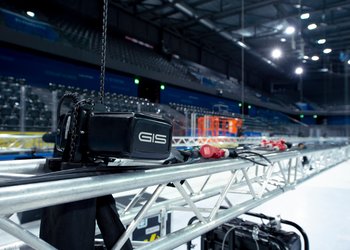
What is a climbing hoist?
When used as a climbing hoist, the load hook is attached to the ceiling or existing installation so that the chain hoist body is at the bottom and the chain exit is at the top. You could therefore say that the motor is upside down (motor down). The load is attached to the suspension part (usually a rotatable hook suspension) and the chain hoist then pulls itself up to the load hook together with the attached load.
It should be noted that in this application the dead weight of the motor, including the chain, must be deducted from the rated load.
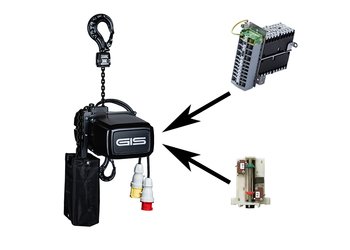
What is the "low voltage" version?
In the low-voltage version, each motor is equipped with a transformer, a contactor control for low voltage (standard 42 VAC) and with a gear limit switch for the highest and lowest hook position.
For operation, a connection cable (1m cable with red CEE 4-pin plug) is required for the power supply and a control cable (1m cable with yellow CEE 4-pin plug). Both cables lead to the controller. The controller is responsible for the emergency stop function.
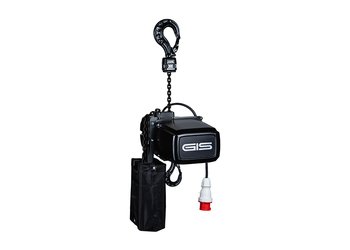
What is the "direct control" version?
In contrast to the "low voltage" version, direct-controlled motors are not equipped with a transformer, a contactor control and in most cases not with a limit switch.
The motors are connected to a controller by a connecting cable (1m cable with red CEE 4-pin plug). The controller determines the direction of travel of the motors by changing the phases.
The motors in the "direct control" version have only one lifting speed.
A limit switch for directly controlled chain motors is available as an option.
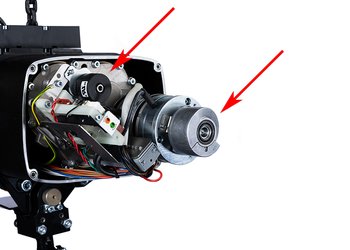
How does path measurement work for chain motors?
Incremental or absolute encoders are used for path measurement. These are rotating encoders that measure the rotary motion of axles or wheels. They are installed in the chain hoist, either at the sprocket wheel or on the drive shaft. Depending on the placement, the encoder detects the movement of the sprocket or the drive shaft and thus enables the calculation of the distance covered by the chain hoist/load hook.
For chain hoists according to C1 (UC4-6), path measurement is mandatory. The customer can determine whether the encoder must be designed in safety standard SIL3 as an option.
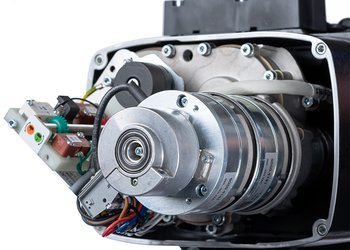
What is the difference between an incremental and an absolute encoder?
Either incremental or absolute encoders are installed for path measurement in chain hoists.
The difference between the two encoder types is that the incremental encoder must be synchronized with a reference rotation in order to determine an absolute position. In simple terms, this means that the encoder starts counting the revolutions again from the beginning after the chain hoist is switched off.
The absolute encoder, on the other hand, retains its reference point even after switch-off, so that the system knows the current height of the load when it is switched on.
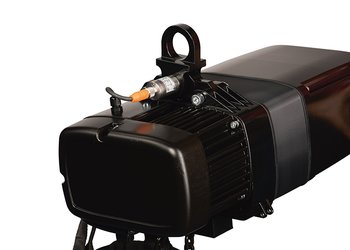
How does the electronic load measurement work?
Optionally, electric chain motors can be equipped with electronic load measurement. In this case, a load cell (or load-measuring pin) is integrated into the suspension of the chain hoist. This sends electrical signals to the evaluation or control system so that it can be determined how heavy the load is that is currently suspended from the chain hoist.
However, the load measurement does not necessarily have to be integrated into the suspension. In stage construction, it is also common to suspend the chain hoist with eye suspension from a shackle with integrated load measurement.
The control system must switch off all motors in the group in the event of an overload. It must then only be possible to lower the load until the overload has been eliminated.
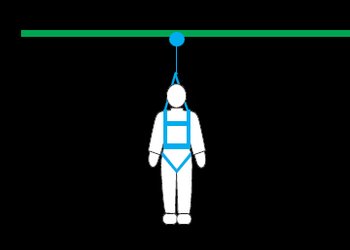
Is the lifting of persons permissible?
The transport of persons with electric chain hoists is not permitted according to the EN 14492-2 standard and our operating instructions.
However, the SQP2 and EN17206 standards describe that the decision and responsibility for transporting people lies with the organiser's safety officer or the performer.
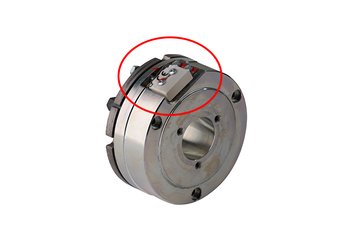
How does brake monitoring for the motors work?
As an option, the motors can be equipped with brake monitoring. For this purpose, the DC spring-loaded brakes used are equipped with an additional micro switch. Through the signal from the micro switch, the control system knows whether the brake is active (released) or not.
Depending on the applicable regulations, brake monitoring is mandatory for certain theatre installations and stage applications.
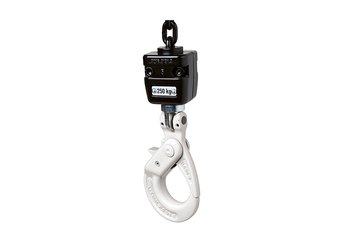
What is a safety load-locking hook?
With the safety load-locking hook, the mechanical interlock of the hook lug secures the transported goods. This hook closes automatically under load and can only be unlocked manually without load. Thanks to this design, it cannot open unintentionally and thus drop the load.
With the normal load hook, a hook safety catch prevents the load from falling out, but it is not locked, as with the safety load hook.
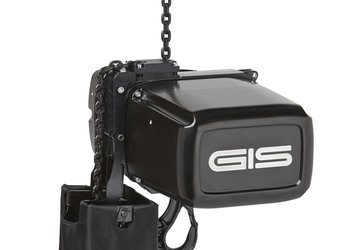
Tips & tricks: Lubrication of the chain
Regular lubrication of the chain can extend the service life by the factor 20 - 50. According to our operating instructions, we recommend a creeping gear oil of type 15W-40, paying particular attention to the viscosity. The chain manufacturer recommends a viscosity of less than ISO 300. Unsuitable chain oil can lead to the chain clumping in the chain bag and the chain links no longer running properly through the chain guidance. Before start-up and regularly during use, the chain must be oiled along its entire length as well as between the chain links.
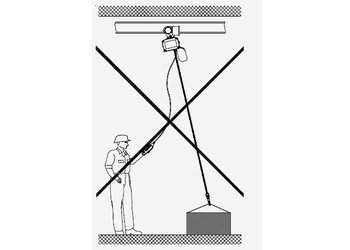
Tips & tricks: Preventing diagonal pull
The diagonal pull of loads (> 4°) should be avoided, since the chain and the chain guide are excessively worn out in this way, which can affect the safety of the system.
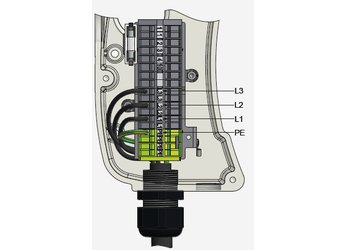
Tips & tricks: Wrong running direction of the chain hoist
You press the "up" button on the control switch, but the electric chain hoist lowers the load or vice versa. This is most likely because the hoist is incorrectly connected electrically to the mains and needs to be connected correctly by an authorised professional.
Trolleys
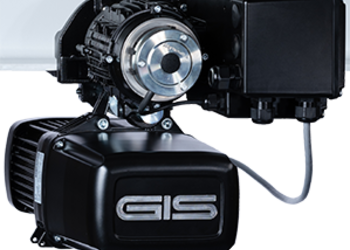
Are trolleys equipped with a fall protection?
All GIS manual and electric trolleys are equipped with an integrated fall and climbing protection made of solid cast steel, as well as an intervention protection.

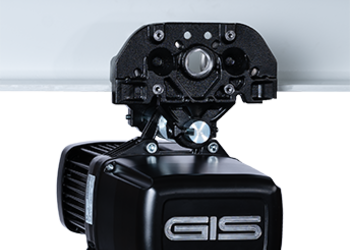
Tips & tricks: Trolley with plastic rollers
Should the standard steel rollers be too loud or should they transmit noise into the building, we recommend plastic rollers (up to maximum 1 250 kg). For more soundproofing solutions please contact our sales team.
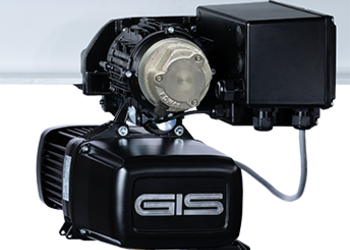
Tips & tricks: Trolley with stainless rollers
In case of aggressive acids or alkalis in your working environment, we recommend a corrosion-resistant electric chain hoist and a trolley with corrosion-resistant rollers.


